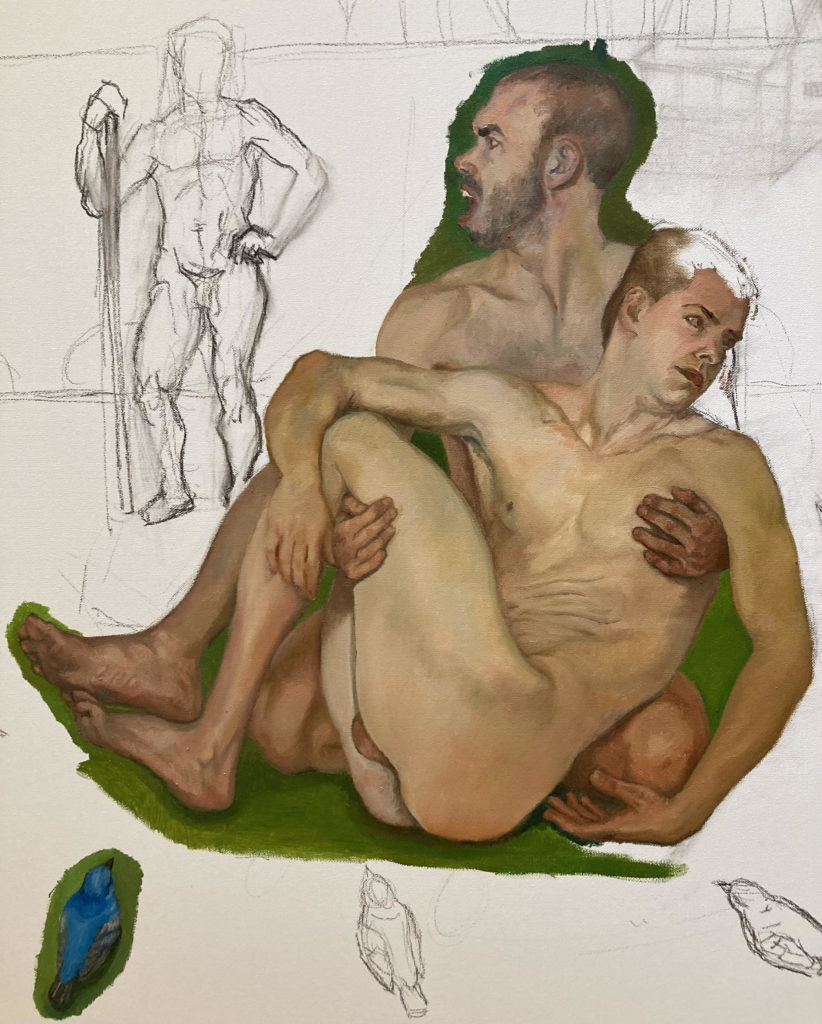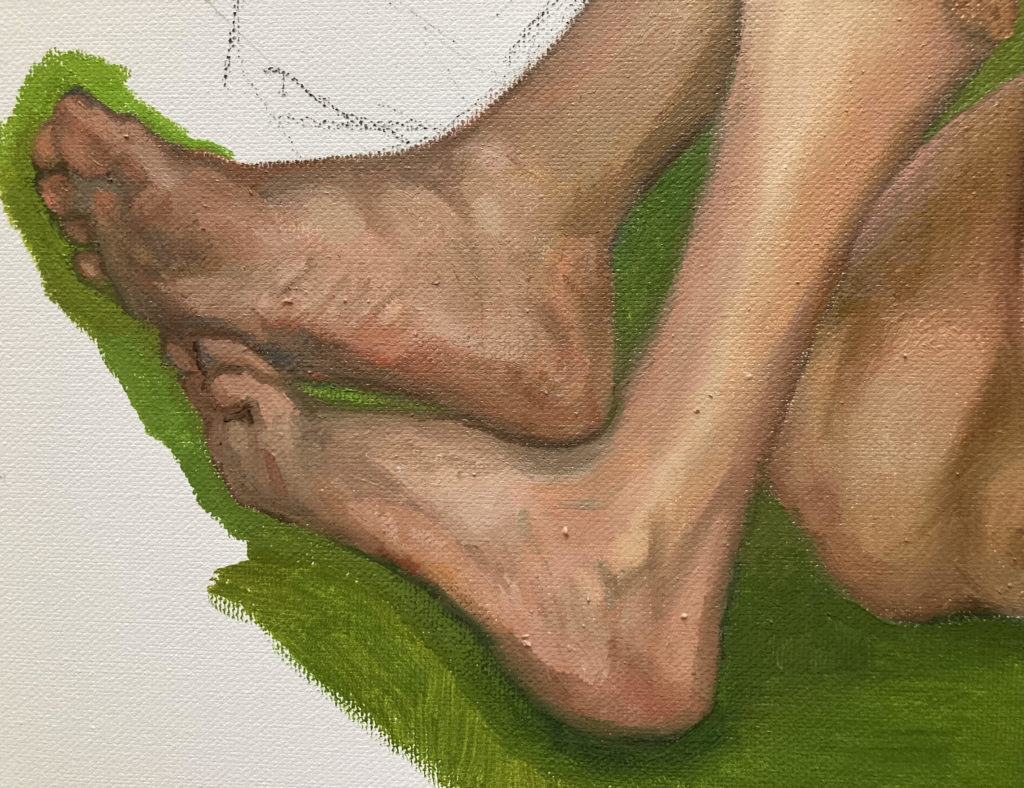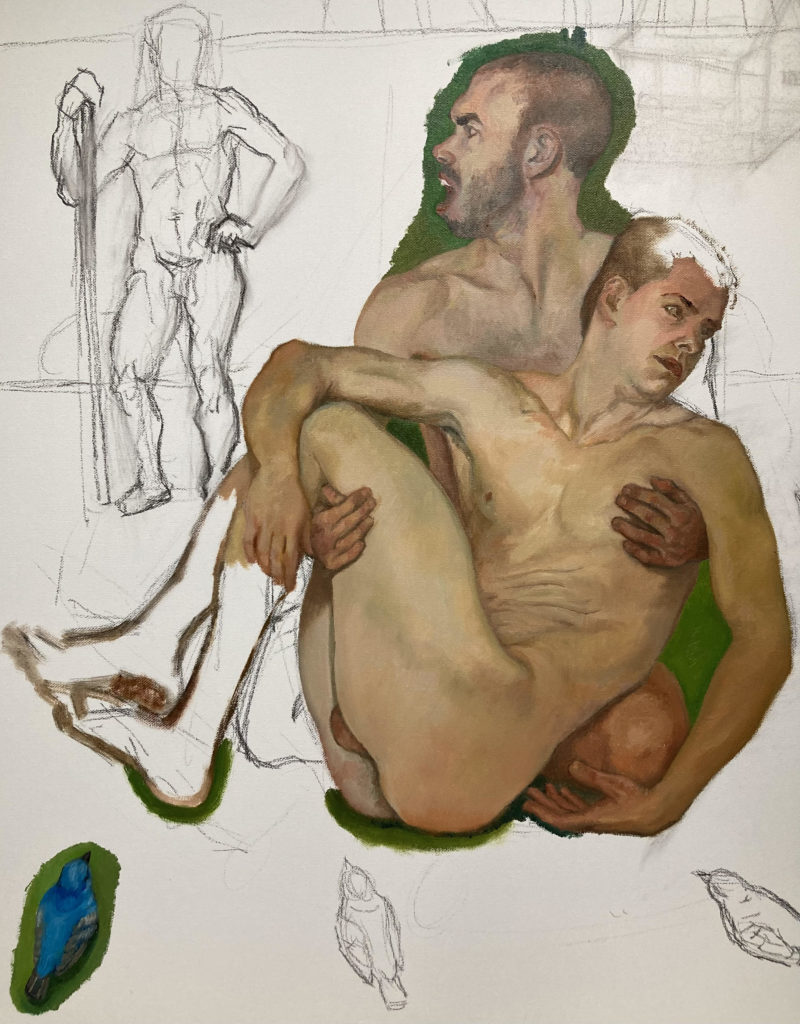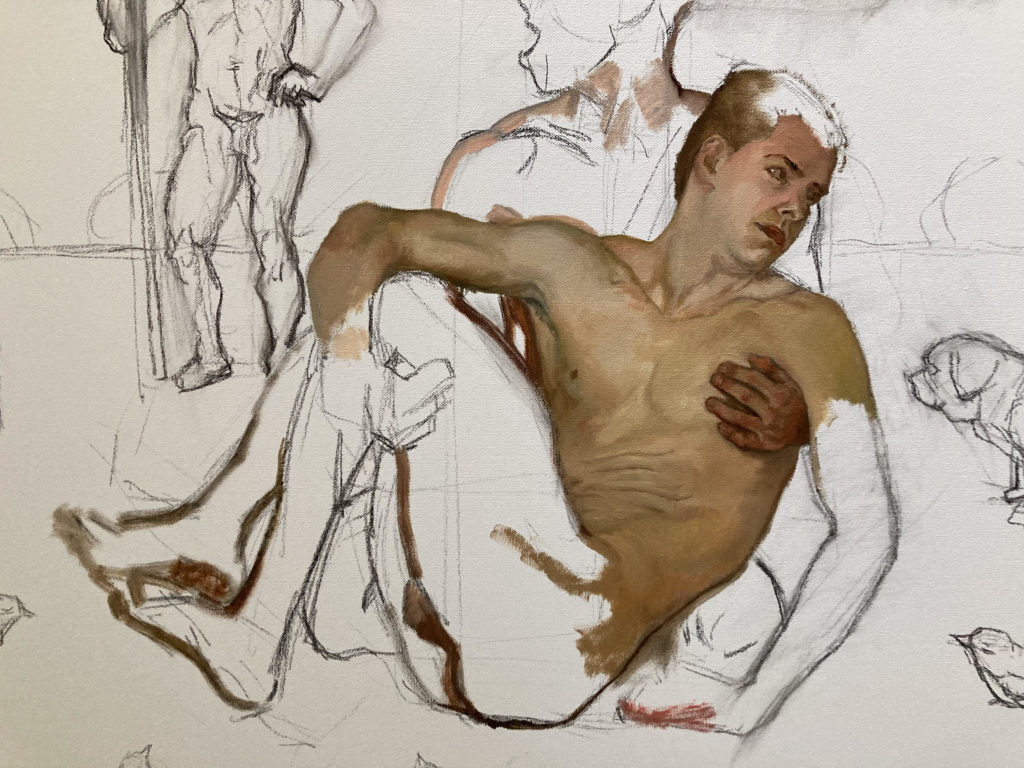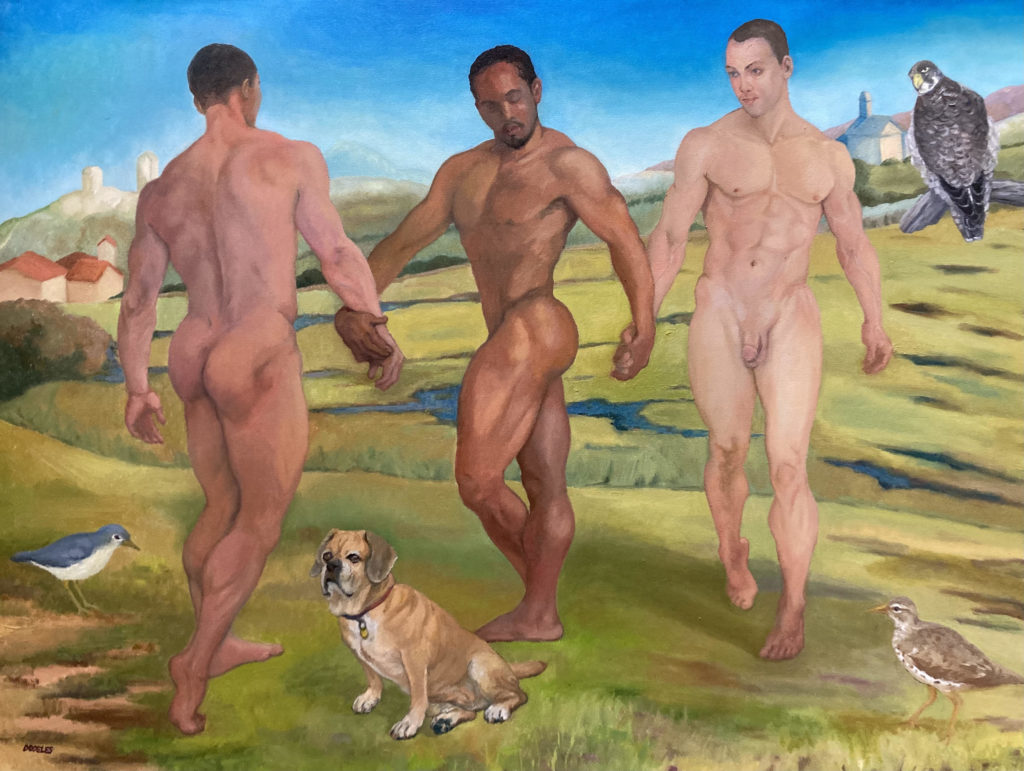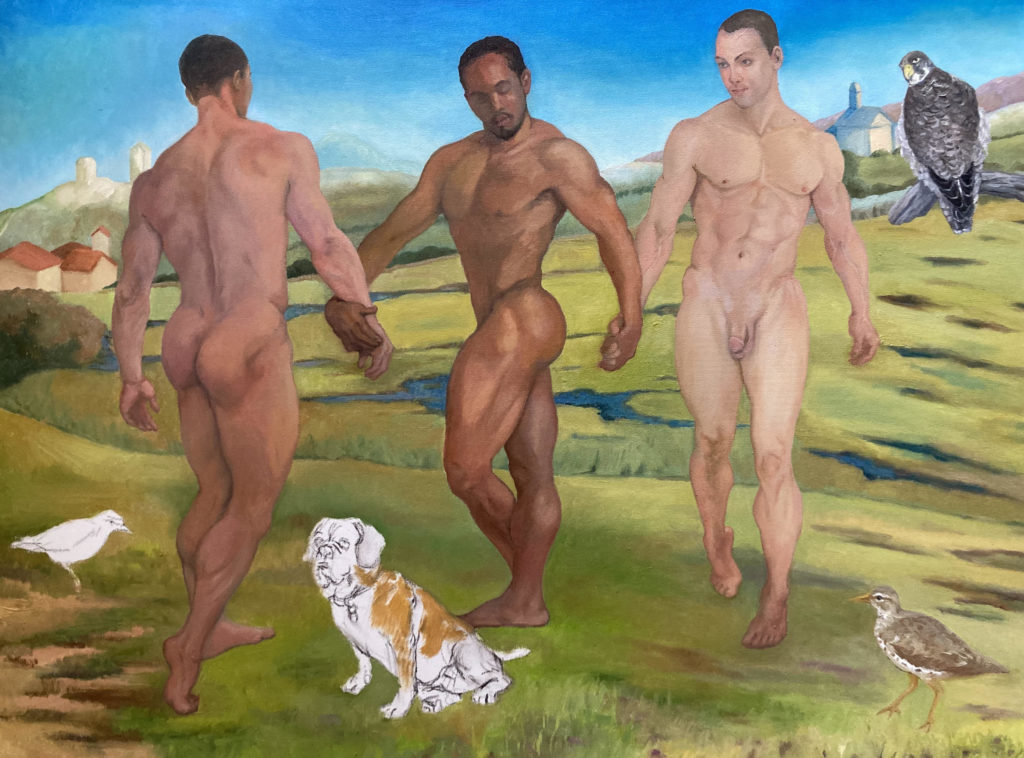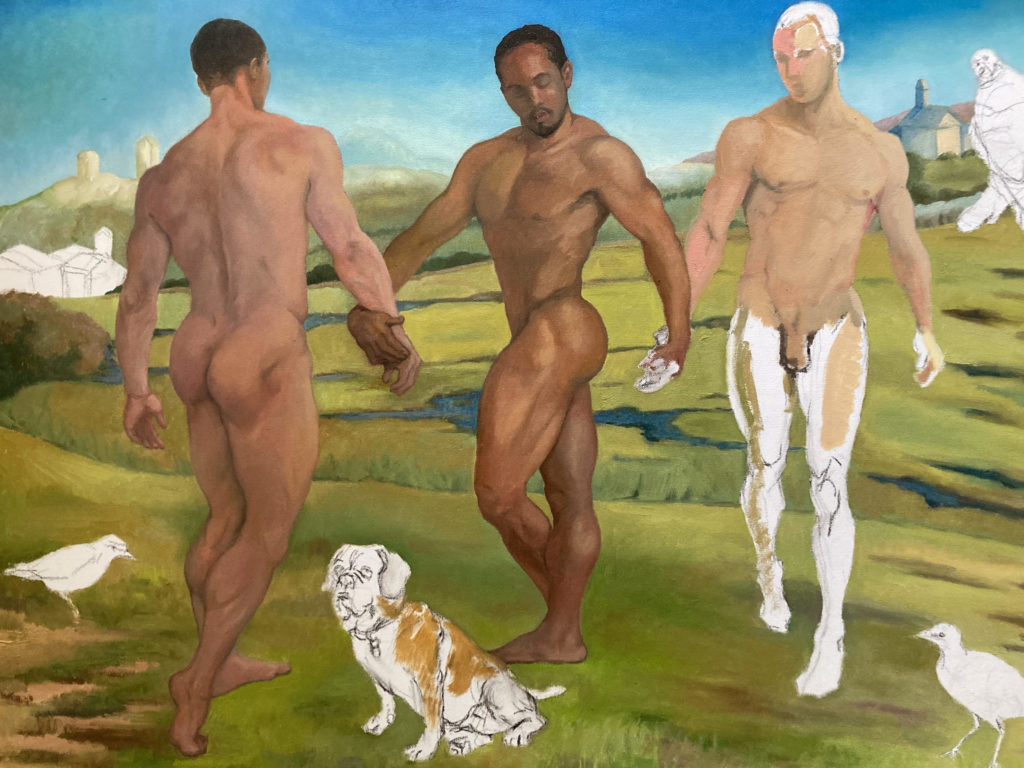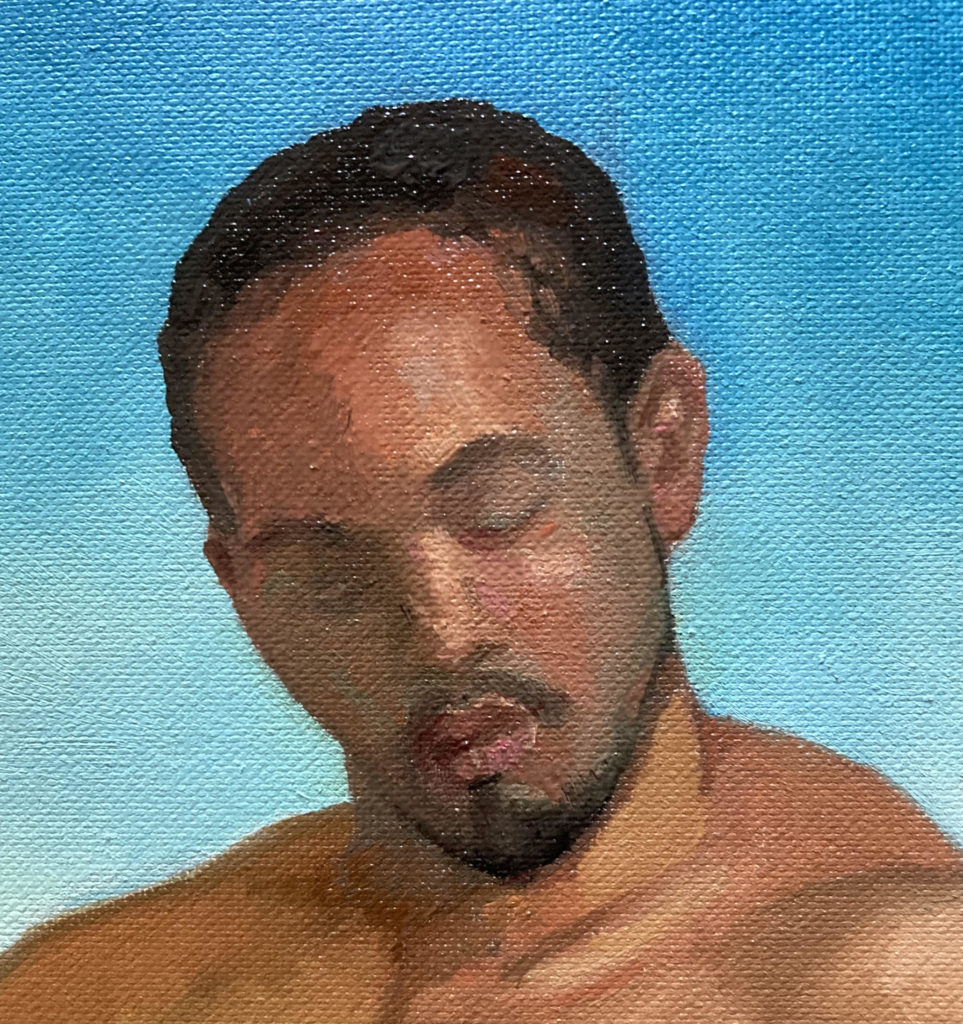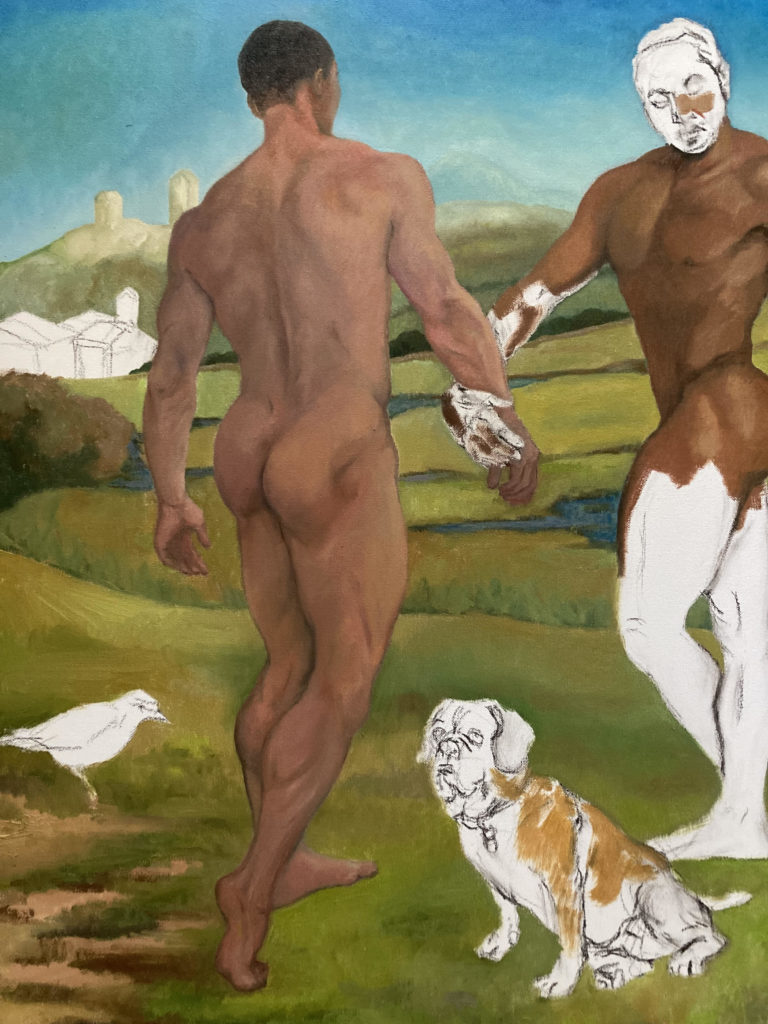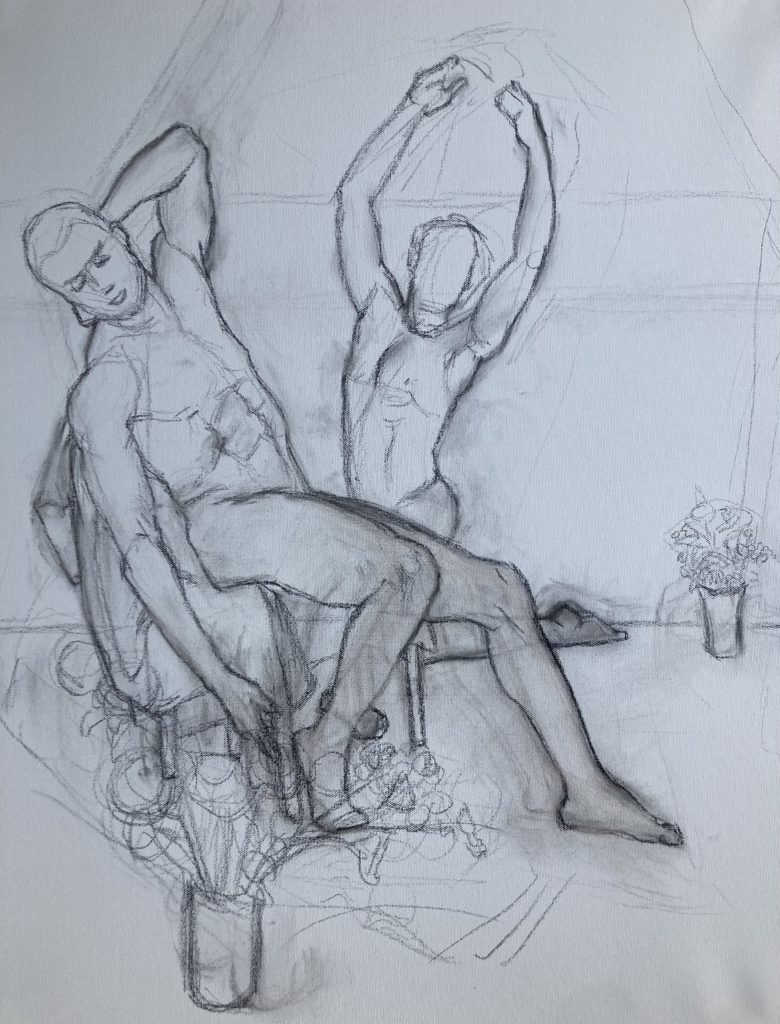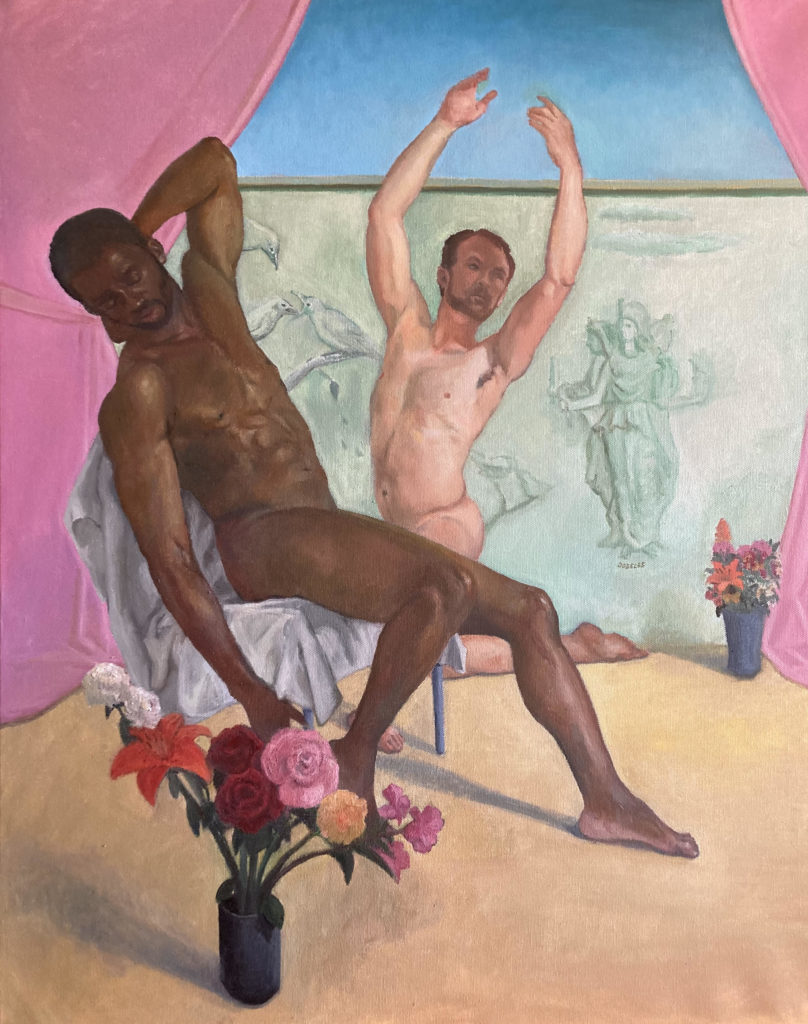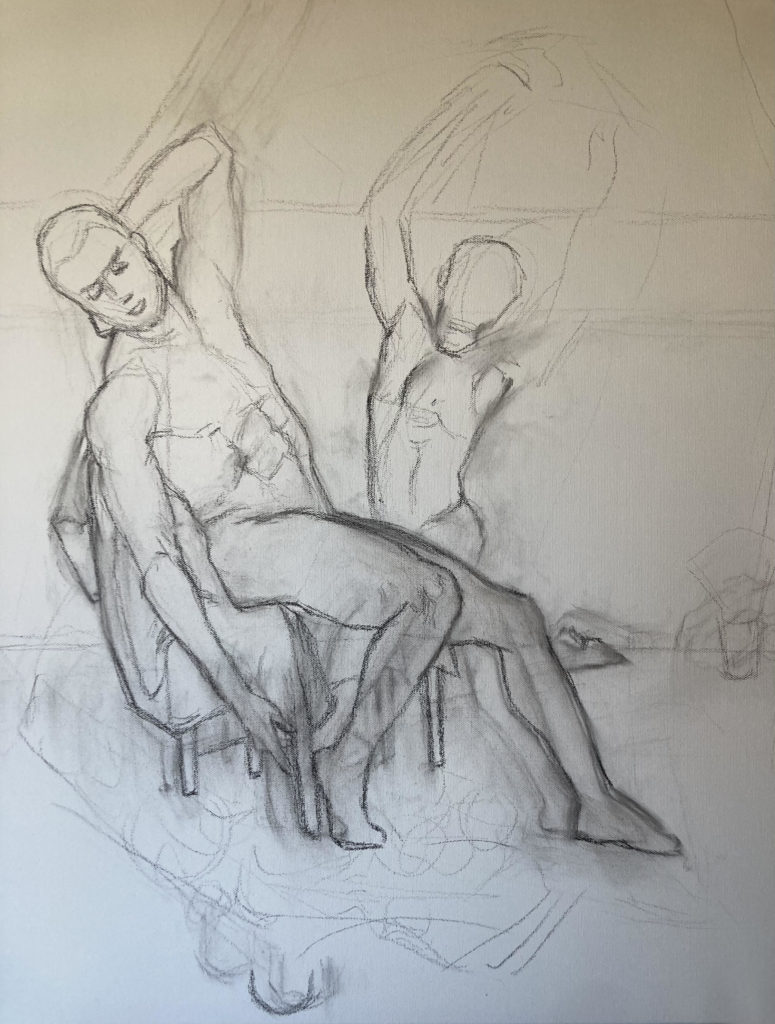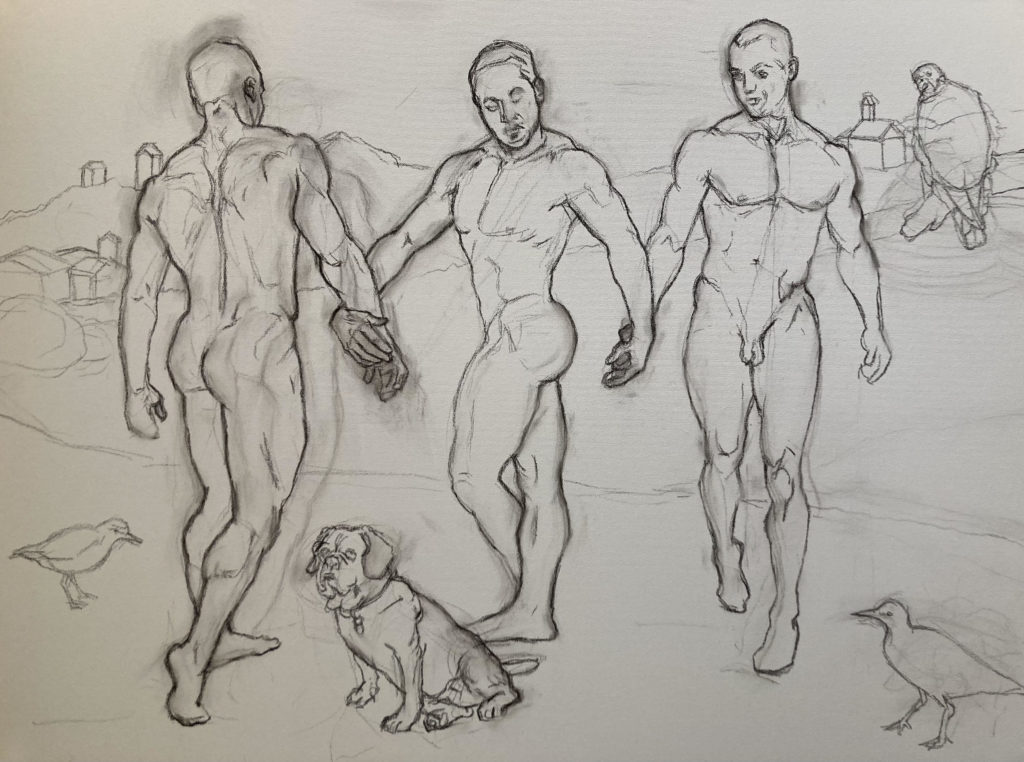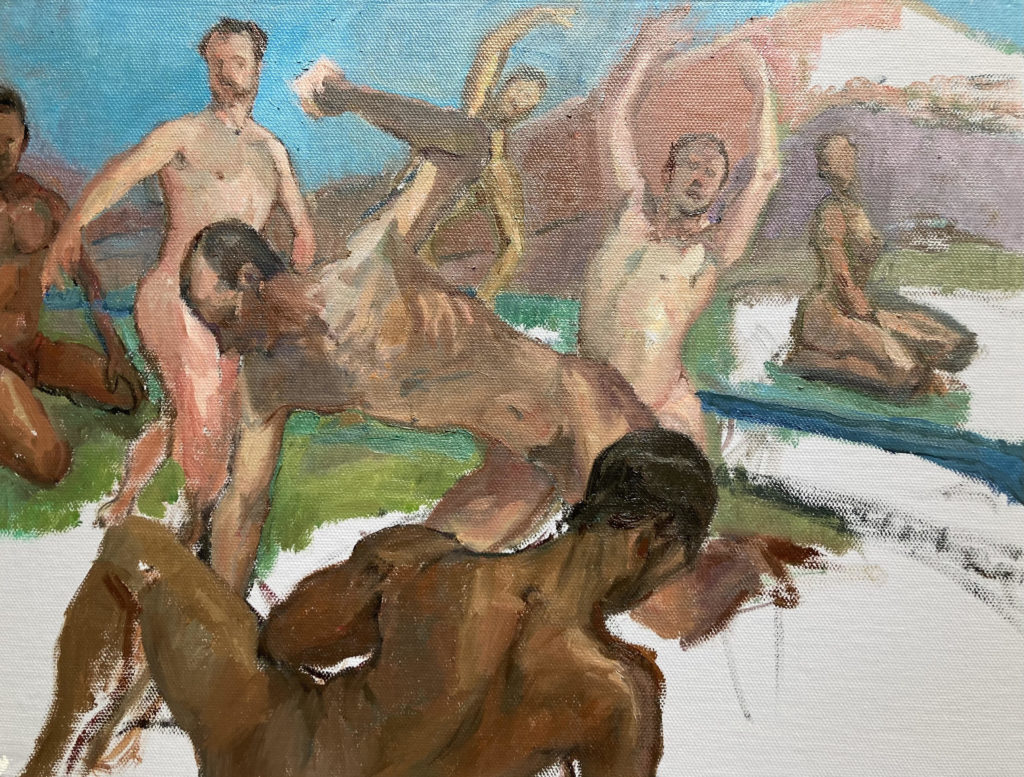Of Feet and Vulnerability
Every time you wear sandals instead of shoes you make yourself vulnerable; you do so if you go barefoot. Why do our bodies make us open to judgement, or worse, attack? Why do we allow ourselves to live inside skins that can be ridiculed, pummeled or desecrated? And after we have been humiliated why do we say “once more, please?” Good questions for which I don’t have the answers. Rather, I choose not to answer. This particular illustrated body is in danger because something has weakened him. His feet being exposed seems to be the least of his problems.
When I first learned about Caravaggio, one of my professors talked about why the artist painted a figure’s dirty feet. These dirty feet showed that the painter used every-day people to represent Jesus’s disciples. The gutter was brought into a work of art. Low meets High. The art of Caravaggio is for the masses and about the masses. Those feet demonstrated that Caravaggio came from a world that was decided on the streets. This is very different than the figures seen in Rubens: those lush, bathed and neatly quaffed figures more at home in the Courts of Kings and Queens.
This is where I am with the most recent painting. Perhaps I have overworked these feet already, and I am feeling a bit insecure about that.
